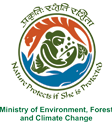


A pilot implementation is an activity undertaken in the context of development and implementation of plans and guidelines, to test a plan/ guideline in a realistic setting and thereby learn about the fit between the plan/ guidelines and its organizational use situation and about changes necessary prior to full-scale implementation. The basic assumption is that the systems being used for pilot implementation and the plan/ guideline documents being used are under development, so it is expected that the process of implementation will be met with challenges including errors, breakdown of process, missing links/ resources to carry out specific measures etc. Since the core purpose of the pilot implementation process is learning, all such ‘failures’ are acceptable and are used to improve the system and the documents.
Advance Zero Drafts of the following guidelines are available for pilot implementation:
Advance Zero Drafts of the following guidelines will be available soon for pilot implementation:
The guidelines are being developed and will be implemented using a harmonious co-existence approach, where all efforts are to be made to ensure that the mitigation measures are effective & wildlife-friendly
A pilot implementation is an activity undertaken in the context of development and implementation of plans and guidelines, to test a plan/ guidelines in a realistic setting and thereby learn about the fit between the plan/ guidelines and its organizational use situation and about changes necessary prior to full-scale deployment.
The guidelines, in the current form, are the result of discussions and deliberations by large groups of authors consisting of scientists, policy experts, and field practitioners, over a period of two years during 2019-20.
However, before the guidelines are put up for implementation, a process of pilot testing of the guidelines is being facilitated for the States to test and report on the feasibility and acceptability of the recommendations expressed in the Guidelines (Advanced Drafts), using structured process and tools available in this Toolkit.
The pilot implementation helps in evaluation of the methodology, approach and implementation structures deployed in a wide range of human-wildlife conflict situations; and to learn from the successes and challenges. The feedback, during pilot implementation, is expected from decision-making level to strengthen measures for effective alignment of the guidelines with state level structures, processes and practices as well as field-implementation level to strengthen the operational efficiency.
The basic assumption is that the systems being used for pilot implementation and the plan/ guideline documents being used are under development, so it is expected that the process of implementation will be met with challenges including errors, breakdown of process, missing links/ resources to carry out specific measures etc. Since the core purpose of the pilot implementation process is learning, all such ‘failures’ are acceptable and are used to improve the system and the documents.
A- What capacities and institutional mechanisms are required at the State and local levels to effectively implement the final guidelines?
B- What needs to be modified in the Draft Guideline document itself, to enhance its applicability to the field and its overall effectiveness
As part of the Indo-German cooperation three landscapes in three States (Haridwar-Rajaji in UK, Gorumara in WB, Kodagu in KA) are selected for the pilot testing of the guidelines. Apart from these landscapes, additional divisions are also planned to be selected, depending on Confirmation to participate in the pilot implementation of guidelines from the States.
States will confirm to the following process and approach:
STEP 1: States share their confirmation to participate in the pilot implementation of guidelines, while identifying species, issues and respective piloting divisions in their States, preferably adjoining divisions in a landscape [By January 30, 2021]
STEP 2: Officers from identified divisions are brought together in an online workshop on Pilot Implementation process and methods, to share the toolkit- guidelines and the piloting protocol and formats (December 21, 2020; February 5, February 8
STEP 3: Feedback from the piloting states and divisions is received by GIZ on the first draft of the toolkit, along with identification of key sectors and stakeholders for each piloting division using Tool 1 (Feb 8, 2021)
STEP 4: Institutional framework and coordination mechanism will be set-up (e.g a WhatsApp group, web-based forum) for the group of piloting divisions [by February 8, 2021].
STEP 5: GIZ/ WII and experts facilitate the process of baseline development for each division, using Tool 2 coordinated by the nodal Officers, facilitated and supported by GIZ / WII / authors (By March 31, 2021).
STEP 6: Regular fortnightly feedback on the guidelines will be collected [April 1 - September 30, 2021] in following ways:
Mid-term consultation to reflect on the process
and outcomes [July first week, 2021]
STEP 7: Use of the learnings from the pilot implementation of guidelines will be integrated into the draft guidelines: feedback from different divisions/ teams/ stakeholders will be compiled together and consolidated, to be used for updating the guidelines, national and state plans and divisions plans at the end of 2021, or interim revision, if required [Oct 1- Dec 30, 2021]
This toolkit intends to facilitate pilot implementation and evaluation of the guidelines in the field.
The toolkit provides:
For the Piloting divisions, the toolkit is accompanied with:
Tool 1: Sectors and Stakeholders relevant for effective implementation of the guidelines
Tool 3: Fortnightly feedback from field teams
Tool 4: Recording incidence data on Emergency response
Tool 5: Structure, composition and jurisdiction of HWC Mitigation Response teams
Tool 6: Capacity Needs Assessment of HWC Mitigation Response teams
Tool 7: Equipment for HWC Mitigation
Tool 8: Template for providing feedback on advance draft of guidelines